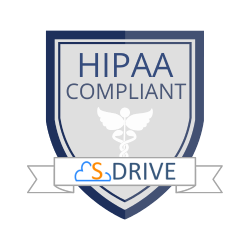Document management plays a foundational role in how organizations operate within Salesforce. Teams depend on accurate, secure, and accessible files at every stage of the customer lifecycle. But without a connected approach, things break down quickly.
Version mismatches create confusion. Manual uploads slow everything down. These inefficiencies stack up, making processes risk-prone and time-consuming.
An end-to-end document management system solves these problems by connecting each phase of the document lifecycle inside the platform teams already use. It offers structure, traceability, and time savings. And when implemented well, it becomes a strategic enabler of productivity and risk reduction.
Document Management Starts with Control
The first building block in any document management strategy is version control. Teams working in Salesforce often generate or edit documents collaboratively, and without a single source of truth, errors multiply. Clients can receive old versions of proposals, contracts, or internal forms by accident. Users can also upload them to the wrong record.
A connected document system automatically tracks each edit, upload, or replacement. Users no longer have to rely on renaming files or emailing colleagues to confirm the latest version. Real-time updates inside Salesforce records eliminate guesswork. Since the files tie directly to the record, they stay anchored to the right opportunity, case, or contact.
This improves accuracy, but it also builds trust. Teams can act quickly without second guessing what they’re looking at.
Visibility Prevents Delays and Miscommunication
One of the most common breakdowns in any document-heavy process is a lack of visibility. A document might be ready for approval, but someone hasn’t notified the stakeholders. Or worse, no one even knows who should review it. These small breakdowns snowball into delays, missed deadlines, and inconsistent outcomes.
End-to-end document management solves this by embedding visibility directly into the workflow. It allows teams to see the document status immediately. They know who uploaded the file, who edited it, and what action needs to happen next.
In Salesforce, users can set up approvals that trigger automatically when they upload a file to a record. Or shared links that update in real time, so reviewers never see the wrong version. Visibility like this helps teams move faster without sacrificing oversight.
Reducing Manual Errors Saves Time and Protects Data
Manual handling is the hidden enemy of document-based processes. Every time someone renames a file, downloads a document, or copies data between systems, there’s a chance of error.
The process is not always dramatic. Sometimes it’s just a small typo, a missed field, or a misplaced attachment. But over time, these moments compound into risk.
Reducing manual effort does more than improve productivity. It gives teams the confidence that their workflows are consistent and protected.
How Seamless Document Access Accelerates Productivity
Productivity thrives when people can find and use what they need. But in many organizations, document access is limited. Files live in email threads, local folders, or disconnected storage systems. Even inside Salesforce, users may leave the platform entirely just to retrieve or upload a single file.
End-to-end document management brings everything into one place. Teams keep up with the workflow without having to switch tools. That might mean dragging a PDF into a case feed without ruining the productivity process. The fewer clicks, the faster the team can respond.
And it’s not just about speed. It’s also about focus. When users don’t have to think about where to find or store something, they can concentrate on the work that matters.
Building Accountability Through Auditability
Any time documents pass through multiple hands, like legal, sales, operations, there needs to be a clear trail of activity. Auditability keeps workflows accountable and defensible.
End-to-end document management systems maintain this trail automatically. The system logs each interaction, and permissions that match your Salesforce roles restrict access. That means fewer surprises and a more predictable flow of information.
Audit logs also support compliance efforts. When regulators or internal auditors request documentation, teams can provide them confidently. They track and timestamp every action.
Connecting Document Management to Salesforce Automation
Once document workflows live inside Salesforce, they become easier to automate. Instead of treating document steps as separate processes, organizations can include them in broader automation strategies.
Document management becomes an active part of the business logic, not just a filing cabinet. And because these actions happen inside Salesforce, they tie naturally into other automated steps like email notifications, task creation, or approval routing.
This integration doesn’t just save time. It helps ensure that business-critical documents never fall through the cracks.
How S-Drive Supports Document Management Inside Salesforce
S-Drive extends Salesforce’s document handling capabilities in a powerful, user-friendly way. By combining native Salesforce record visibility with scalable storage, it gives teams everything they need to manage documents end-to-end without ever leaving the platform.
Let’s say a customer success team needs to handle onboarding forms, training guides, and signed agreements for every new client. Instead of switching tools or chasing down folders, they can upload all documents directly into the account record using S-Drive. Each file inherits the record’s permissions, stays version-controlled, and appears instantly in the related list or S-Drive component.
If a document needs approval, it can trigger a Flow. If the team needs to share it externally, they can send a secure link. The result is a seamless experience that keeps files accessible, compliant, and connected to the customer journey.
You can see more examples of how teams use S-Drive in our case studies and Salesforce-specific use cases, which cover industries like financial services, education, healthcare, and more.
Final Thoughts
Document management isn’t just a matter of storing files. It shapes how teams communicate, how fast they move, and how reliably they deliver. Organizations leave room for mistakes and miss out on efficiency without a connected system. But when the document lifecycle becomes part of the Salesforce workflow, everything changes.
S-Drive helps make that transition simpler. It provides a purpose-built foundation for document handling inside Salesforce, from upload to audit trail. And because it’s designed for Salesforce, it fits naturally into the way teams already work.
Check out AppExchange or contact us if you want to learn more about how S-Drive can simplify your document management process.



